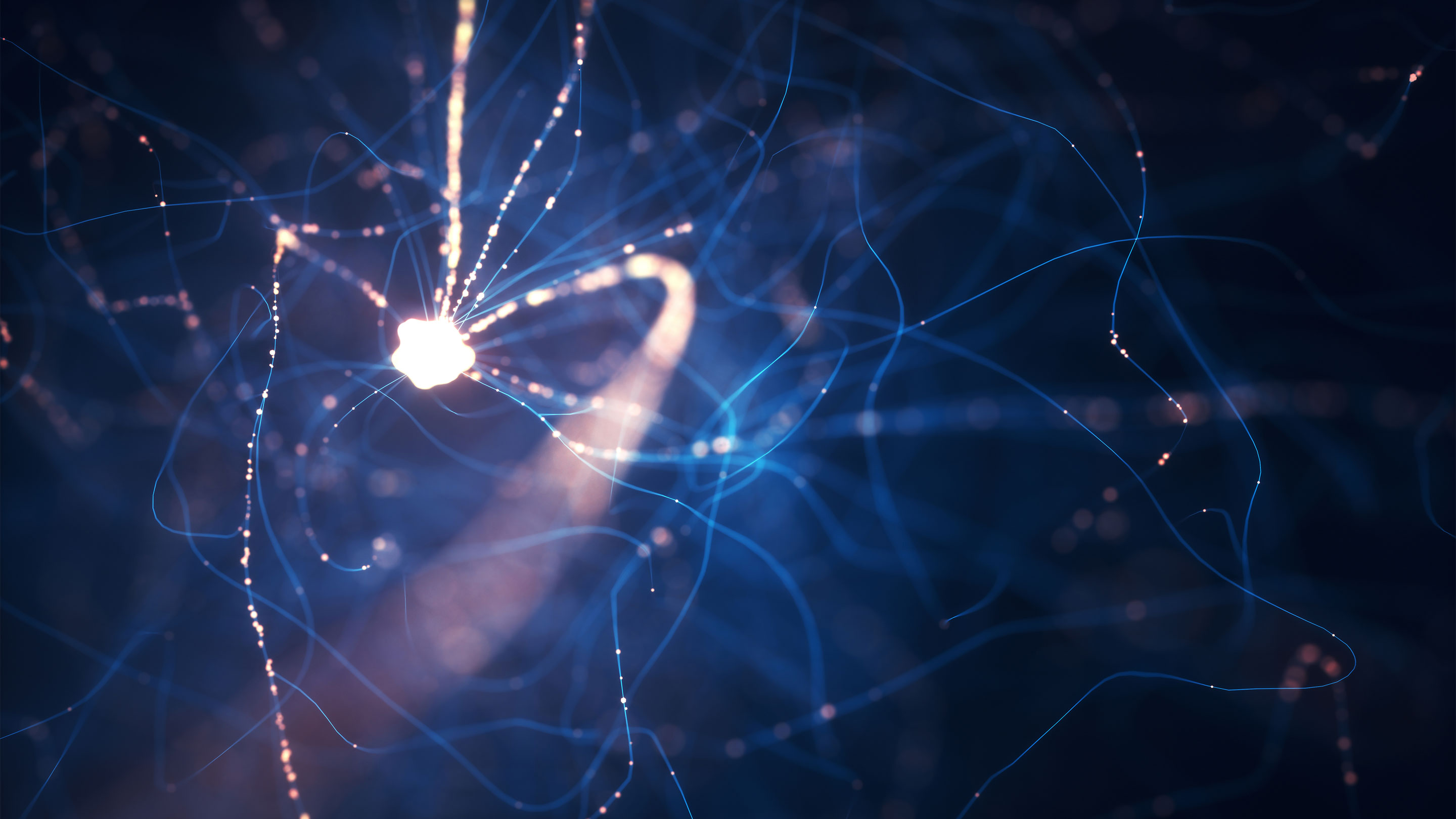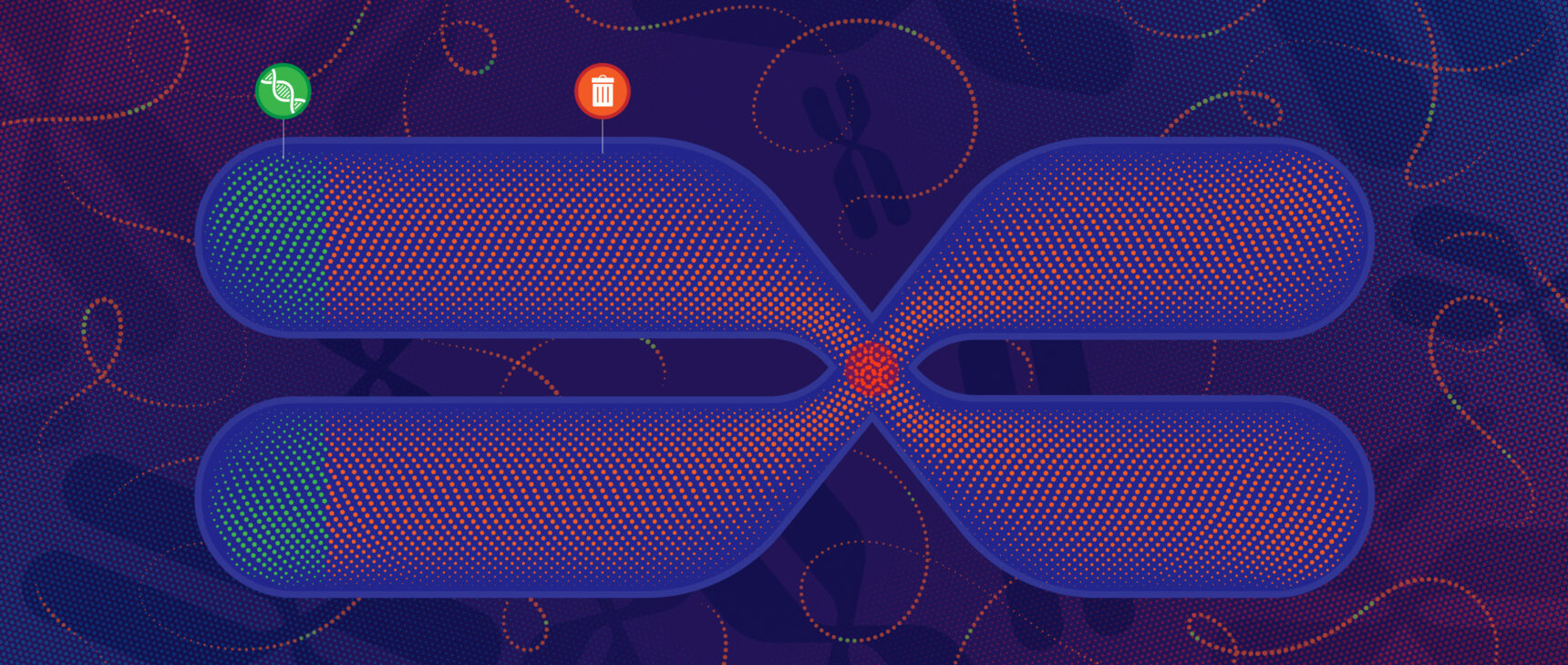How Computationally Complex Is a Single Neuron?

ktsdesign/Shutterstock
Introduction
Our mushy brains seem a far cry from the solid silicon chips in computer processors, but scientists have a long history of comparing the two. As Alan Turing put it in 1952: “We are not interested in the fact that the brain has the consistency of cold porridge.” In other words, the medium doesn’t matter, only the computational ability.
Today, the most powerful artificial intelligence systems employ a type of machine learning called deep learning. Their algorithms learn by processing massive amounts of data through hidden layers of interconnected nodes, referred to as deep neural networks. As their name suggests, deep neural networks were inspired by the real neural networks in the brain, with the nodes modeled after real neurons — or, at least, after what neuroscientists knew about neurons back in the 1950s, when an influential neuron model called the perceptron was born. Since then, our understanding of the computational complexity of single neurons has dramatically expanded, so biological neurons are known to be more complex than artificial ones. But by how much?
To find out, David Beniaguev, Idan Segev and Michael London, all at the Hebrew University of Jerusalem, trained an artificial deep neural network to mimic the computations of a simulated biological neuron. They showed that a deep neural network requires between five and eight layers of interconnected “neurons” to represent the complexity of one single biological neuron.
Even the authors did not anticipate such complexity. “I thought it would be simpler and smaller,” said Beniaguev. He expected that three or four layers would be enough to capture the computations performed within the cell.
Timothy Lillicrap, who designs decision-making algorithms at the Google-owned AI company DeepMind, said the new result suggests that it might be necessary to rethink the old tradition of loosely comparing a neuron in the brain to a neuron in the context of machine learning. “This paper really helps force the issue of thinking about that more carefully and grappling with to what extent you can make those analogies,” he said.
The most basic analogy between artificial and real neurons involves how they handle incoming information. Both kinds of neurons receive incoming signals and, based on that information, decide whether to send their own signal to other neurons. While artificial neurons rely on a simple calculation to make this decision, decades of research have shown that the process is far more complicated in biological neurons. Computational neuroscientists use an input-output function to model the relationship between the inputs received by a biological neuron’s long treelike branches, called dendrites, and the neuron’s decision to send out a signal.
This function is what the authors of the new work taught an artificial deep neural network to imitate in order to determine its complexity. They started by creating a massive simulation of the input-output function of a type of neuron with distinct trees of dendritic branches at its top and bottom, known as a pyramidal neuron, from a rat’s cortex. Then they fed the simulation into a deep neural network that had up to 256 artificial neurons in each layer. They continued increasing the number of layers until they achieved 99% accuracy at the millisecond level between the input and output of the simulated neuron. The deep neural network successfully predicted the behavior of the neuron’s input-output function with at least five — but no more than eight — artificial layers. In most of the networks, that equated to about 1,000 artificial neurons for just one biological neuron.
“[The result] forms a bridge from biological neurons to artificial neurons,” said Andreas Tolias, a computational neuroscientist at Baylor College of Medicine.
But the study’s authors caution that it’s not a straightforward correspondence yet. “The relationship between how many layers you have in a neural network and the complexity of the network is not obvious,” said London. So we can’t really say how much more complexity is gained by moving from, say, four layers to five. Nor can we say that the need for 1,000 artificial neurons means that a biological neuron is exactly 1,000 times as complex. Ultimately, it’s possible that using exponentially more artificial neurons within each layer would eventually lead to a deep neural network with one single layer — but it would likely require much more data and time for the algorithm to learn.
“We tried many, many architectures with many depths and many things, and mostly failed,” said London. The authors have shared their code to encourage other researchers to find a clever solution with fewer layers. But, given how difficult it was to find a deep neural network that could imitate the neuron with 99% accuracy, the authors are confident that their result does provide a meaningful comparison for further research. Lillicrap suggested it might offer a new way to relate image classification networks, which often require upward of 50 layers, to the brain. If each biological neuron is like a five-layer artificial neural network, then perhaps an image classification network with 50 layers is equivalent to 10 real neurons in a biological network.
The authors also hope that their result will change the present state-of-the-art deep network architecture in AI. “We call for the replacement of the deep network technology to make it closer to how the brain works by replacing each simple unit in the deep network today with a unit that represents a neuron, which is already — on its own — deep,” said Segev. In this replacement scenario, AI researchers and engineers could plug in a five-layer deep network as a “mini network” to replace every artificial neuron.
But some wonder whether this would really benefit AI. “I think that’s an open question, whether there’s an actual computational advantage,” said Anthony Zador, a neuroscientist at Cold Spring Harbor Laboratory. “This [work] lays the foundation for testing that.”
Outside of AI applications, the new paper also adds to a growing consensus on the strong computational power of dendritic trees and, by proxy, single neurons. Back in 2003, a trio of neuroscientists showed that the dendritic trees of a pyramidal neuron perform complex computations by modeling it as a two-layer artificial neural network. In the new paper, the authors investigated which features of the pyramidal neuron inspired the much greater complexity in their five-to-eight-layer deep neural networks. They concluded that it came from the dendritic trees, and from a specific receptor that receives chemical messengers on the surface of the dendrites — findings that were in line with previous work in the field.
Some believe the result means that neuroscientists should make the study of single neurons a bigger priority. “This paper makes thinking about dendrites and individual neurons much more important than it was before,” said Konrad Kording, a computational neuroscientist at the University of Pennsylvania. Others, like Lillicrap and Zador, suggested that focusing on neurons within a circuit will be just as important for learning how the brain actually puts the computational complexity of single neurons to use.
Regardless, the language of artificial neural networks may provide new insight into the power of neurons and, ultimately, the brain. “Thinking in terms of layers and depths and widths gives us an intuitive sense of computational complexity,” said Grace Lindsay, a computational neuroscientist at University College London. Yet Lindsay also cautions that the new work is still only comparing a model to a model. Unfortunately, it’s currently impossible for neuroscientists to record the full input-output function of a real neuron, so there’s likely more going on that the model of a biological neuron isn’t capturing. In other words, real neurons might be even more complex.
“We’re not sure that between five and eight is really the final number,” said London.




